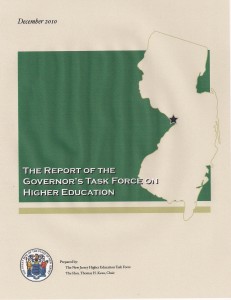Sometimes we have to look behind the news to see what is really happening, no less so justifications for the proposed takeover of Rutgers-Camden.
This morning, we opened the paper to read this reaction from John Sheridan, Cooper Hospital chief executive, in response to news that New Jersey Senator Frank Lautenberg is seeking a federal probe of the costs associated with the proposal: “The reasons for the proposed merger of Rutgers-Camden and Rowan have nothing to do with the funding of the medical school but have everything to do with correcting an imbalance that exists in higher education in South Jersey.”
Ever since the release of the Barer report in January, proponents of the takeover of Rutgers-Camden have been doing their best to deflect interest away from the costs and consequences of the proposal by focusing on untested and inflated projections of benefits to the city of Camden and the region. It’s a classic public relations strategy, we are reminded with the return of “Mad Men” to the screen this week. Cigarettes may not be good for you, but there’s some other reason to smoke them. A little history is in order.
Back in October, 2010, when George Norcross first publicly floated the idea of a University of South Jersey by combining Rowan with Rutgers-Camden, Inquirer reporter James Osborne described the idea as far-fetched, informing his readers that according to the American Association of State Colleges and Universities there never has been a successful merger of public universities in the United States.
About the same time, supporters of Norcross’ idea tried to get the state’s task force on higher education, chaired by former Governor Tom Kean, to incorporate the idea. They tried on more than one occasion, but the best they could do—late in the process—was get the idea further attention as an appendix to the final report. That report, which was  released in December, 2010, specifically advised that the relationship of Cooper Medical School “and its relationship with other institutions of higher education in New Jersey should be included as part of the follow-up study recommended in this report” and described the appended one-page description simply as “a summary of a proposal received by the Task Force.” That proposal was explicit in intent, stating, “The essential ingredients of this university would be the merger of Rowan University and Rutgers-Camden into a single university.”
released in December, 2010, specifically advised that the relationship of Cooper Medical School “and its relationship with other institutions of higher education in New Jersey should be included as part of the follow-up study recommended in this report” and described the appended one-page description simply as “a summary of a proposal received by the Task Force.” That proposal was explicit in intent, stating, “The essential ingredients of this university would be the merger of Rowan University and Rutgers-Camden into a single university.”
The final Kean task force report was released in January. At the same time Rowan University President Donald Farish announced he was moving up his resignation by a year. Far from seeking a respite from higher education, he was inaugurated as president of Roger Williams University in Rhode Island in October. Meanwhile, reports circulated that Farish had not been sufficiently committed to allocating Rowan’s funds to the support of the new medical school. It went without saying that boosting the medical school was a prerequisite for new leadership at the Rowan campus.
The Barer report grew directly out of the Kean task force. It was a much thinner document, without the depth of analysis or assessment provided in the Kean report. That was understandable enough, as its charge was simply to come up with a proposal for medical education. In the process, however, the Barer committee endorsed the Rutgers-Camden takeover. What it didn’t do was build on the analysis offered by the Kean report, expect to echo the complaint that too many New Jersey students were leaving the state for colleges elsewhere. Common sense, expressed in many forums since the Barer report was released, suggest a takeover would have just the opposite effect, driving many South Jersey students either across the Delaware to take advantage of other options located in and around Philadelphia or up the turnpike to one of the remaining Rutgers campuses.
What the Kean task force report does recommend is worth remembering: “Geographically, New Jersey is a small state. Therein lies the opportunity to focus resources into institutions that are differentiated, high quality, diverse, yet complementary. When taken together, they offer our citizens a broad range of valuable educational choices and opportunities.” That’s the voice that proponents of a takeover of Rutgers-Camden’s assets want to drown out, but it’s the voice that is being heard across the region. It calls for further investments in existing universities, while still maintaining choice among them. It seeks an educational product that is tangible and can be built upon, not one that is shrouded in smoke and propped up with mirrors.
Thank you, Howard, for providing that historical context on the Kean task force and what I have heard referred to as Appendix Q, in which the proposed merger first entered the public record. If defies all logic and credibility for John Sheridan to say that the proposed merger has nothing to do with the funding of the medical school, considering that the recommendation to do so comes in the Barer Commission report on the state of medical education. This report offers no reasons why properly resourcing Rowan to support an expanded mission of research and medical school support should require the transfer of Rutger Camden into Rowan beyond strange gravitational arguments that a bigger Rowan will attract more students than would otherwise come to Rutgers Camden and Rowan left to develop on parallel tracks. It’s all about the money and the buildings being used to support Rowan/Cooper.